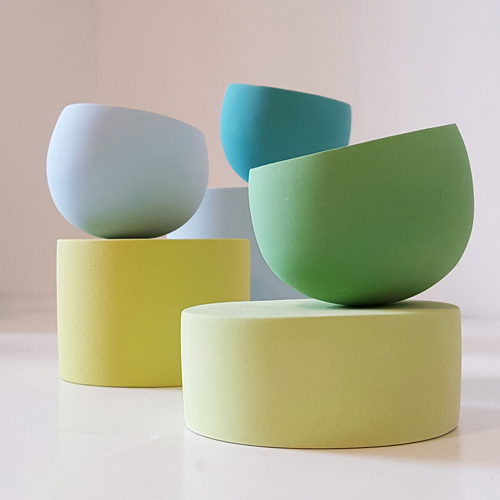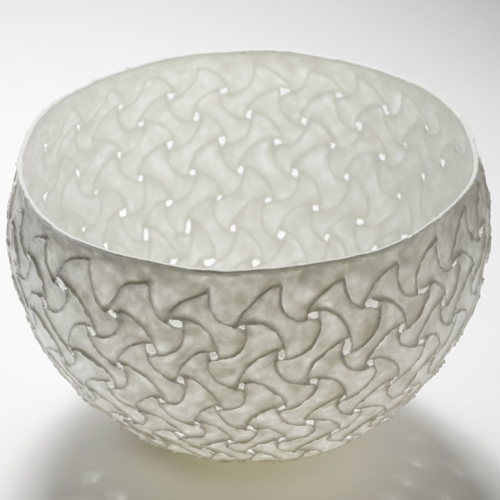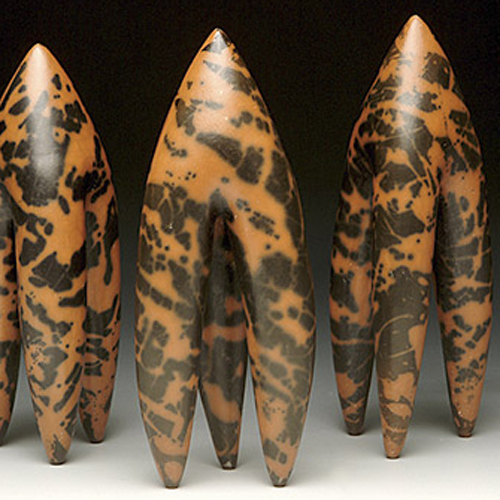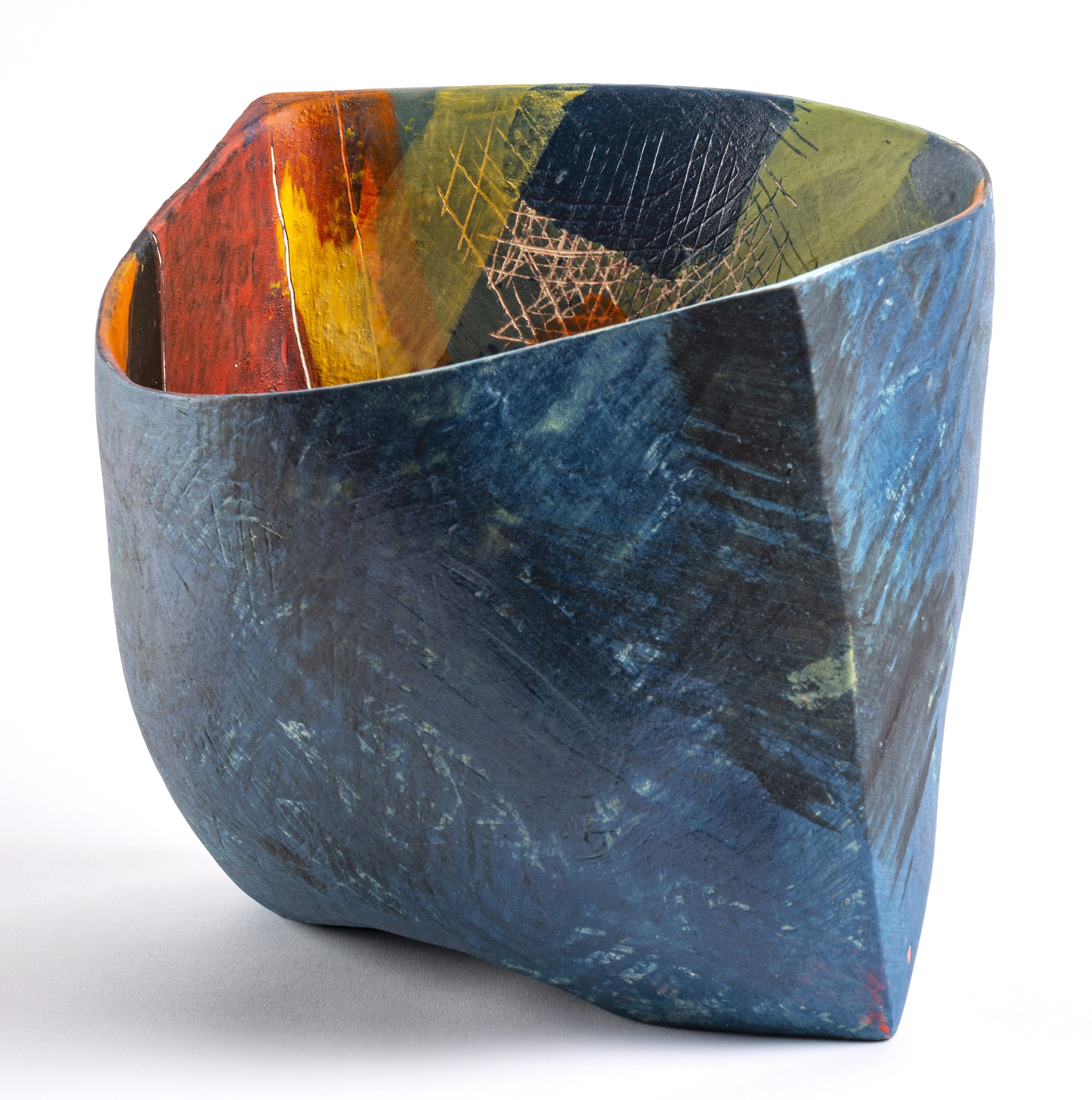
‘Clay with a capital C!’
Artistic ceramics highlights
31 January – 20 September 2020
The digital ceramics magazine ‘de kleine K’ (‘the little C’) celebrates its fifth anniversary. 60 editions have appeared since 26 December 2014, with interviews, reports and step-by-step explanations of ceramic techniques (know-how). The work from these 300 ceramicists was dealt with. For a retrospective exhibition, Keramiekcentrum Tiendschuur could make a selection from this huge number. This exhibition shows a cross-section of the offer of the past five years, at the same time offering an overview of artistic ceramics highlights throughout the world in these five years. It is a tribute to ceramic craftsmanship and offers an inspiring look at contemporary ceramic art.
When the first ‘kleine K’ appeared, there were 121 subscriptions. In the first 11-page issue, they could read interviews and gain inspiration. Since then, ‘de kleine K’ has grown into a fully-fledged magazine.
The current editions have between 60 and 80 pages. The number of subscriptions has increased to some 7,000 and this has made ‘de kleine K’ the biggest ceramic magazine in the Dutch-speaking regions. With interviews, step-by-step articles and a film nearly every month. With stories about, and announcements of current exhibitions, markets and other events. In the ‘Inspiration’ section, 240 interviews were published and 57 step-by-step articles in ‘Know-How’. By now, there are 41 films on YouTube made by ‘de kleine K’. For several starting professionals the magazine has been a springboard to a career in the ceramic art scene. For established ceramicists, the magazine provided a view across the fence to other ceramic techniques. In addition to the digital magazine, the first book was published in July 2016: ‘de grote K’ (‘the big C), an anthology of the ‘kleine Ks’. Just like the digital magazine, this book wins a lot of praise, not only as a rich source of inspiration, but also as a valuable meeting point of technical information and interesting techniques. Part 2 appeared by the end of 2017. On the occasion of its fifth anniversary, the magazine will publish Part 3 of ‘de grote K’, which will be presented at the opening of this jubilee exhibition.
It is impossible for this exhibition to show all published ceramicists. The composition of this exhibition has taken into account a number of factors. Haven’t the participants already been on show recently or are they coming to the Tiendschuur in another exhibition in the near future? The exhibition aims to show the diversity of ceramic art and elicit wonder about the versatility of ceramics. This exhibition shows fine pieces of craftsmanship, just as you are accustomed to in ‘de kleine K’.
That is one of the interesting facets of admiring ceramic work: How did they do it? The enormous range of variations and possibilities never stops to surprise visitors to the ceramics museum. In this exhibition, the visitor can gaze at the great diversity of the manifestations of ceramic art. Thanks to the ‘Know-How’ section and the frank interviews and films of ‘de kleine K’, outsiders are initiated in the secrets of the different ceramic masters.
It is possible, for instance, to take a close look at the work from Guy Van Leemput (BE) and Paula Bastiaansen (NL). Both make very fragile porcelain works. Guy Van Leemput makes transparent spherical shapes with flax porcelain in which he creates beautiful structures. In Paula Bastiaansen’s dynamic sculptures, it looks as if the porcelain is splashing about. But nothing could be further from the truth: she has caught the moment of movement and fixed it in the kiln, just like a camera can freeze movement.
Lisa Biris (NL) takes the spectator along on a walk through the wood or across the seabed. With the patience of a saint, she makes complex, very refined organic structures reminding one of coral reefs or rustling brushes.
Forms from nature as a source of inspiration can also be seen in Hungarian Judit Varga. She makes tough sculptures in which acorn barnacles, wasps’ nests and seedboxes can be recognised.
Barbara Hast (DE), too, makes beautiful organic shapes, jellyfish and sea anemones. Very surprising skins are created in the shapes she cuts out of the clay.
Beautiful skins are to be found in Liza Riddle’s work (US) as well. She manages to provide her work with very regular black, blue and salmon-pink craquelé structures. Mark Goudy, also from the United States, applies wonderful organic dot patterns to his work. As if you see microscopic pictures of fissions on ceramics.
Carolyn Genders (GB)processes her objects in a more intuitive picturesque way, applying many colour layers on top of each other and scratching them away again partially. Her multicoloured shapes and patterns are a treat for the eye and each object has a unique design.
These examples are only a part of what is on show in this exhibition: the tip of the iceberg. And a far smaller tip of the huge iceberg full of ceramic treasures to be seen in ‘de kleine K’ in the past five years!
The exhibition opens at 16:00 on Friday 31 January and will be introduced by Mels Boom, founder and editor-in-chief of ‘de kleine K’, and conservator Sacha Odenhoven. In addition, the third edition of ‘de grote K’ will be presented.
Participating artists are:
Wally Asselberghs (BE); Paula Bastiaansen (NL); Stéphanie Bertholon (FR); Lisa Biris (NL); Willy Van Bussel (NL); Carolyn Genders (GB); Mark Goudy (US); Barbara Hast (DE); Ann Van Hoey (BE); Jongjin Park (GB); Guy Van Leemput (BE); Joris Link (NL); Liza Riddle (US); Judit Varga (HU); Fabienne Withofs (BE); Maria Wojdat (GB).
The artists below will be present in person during the exhibition and give demonstrations and lectures and/or take care of guided tours:
16 February, 14:00: Ann Van Hoey (BE)
8 March, 14.00: Willy van Bussel (NL)
29 March, 14:00: Lisa Biris (NL)
5 April, 14:00: Judit Varga (HU)
Workshops by exhibitors are on:
9 and 10 May: Guy Van Leemput (BE)
16 and 17 May: Wally Asselberghs (BE)
View more in: Virtual Museum




